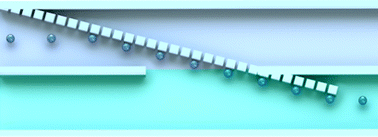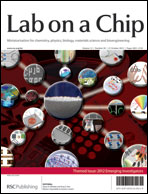”Multi-stage” fluidic reactions are integral to diverse biochemical assays; however, such processes typically require laborious and time-intensive fluidic mixing procedures in which distinct reagents and/or washes must be loaded sequentially and separately (i.e., one-at-a-time). Microfluidic processors that enable multi-stage fluidic reactions with suspended microparticles (e.g., microbeads and cells) to be performed autonomously could greatly extend the efficacy of lab-on-a-chip technologies. Here we present a single-layer microfluidic reactor that utilizes a microfluidic railing methodology to passively transport suspended microbeads and cells into distinct, adjacent laminar flow streams for rapid fluidic mixing and assaying. Four distinct molecular synthesis processes (i.e., consisting of 48 discrete fluidic mixing stages in total) were accomplished on polystyrene microbead substrates (15 μm in diameter) in parallel, without the need for external observation or regulation during device operation. Experimental results also revealed successful railing of suspended bovine aortic endothelial cells (approximately 13 to 17 μm in diameter). The presented railing system provides an effective continuous flow methodology to achieve bead-based and cell-based microfluidic reactors for applications including point-of-care (POC) molecular diagnostics, pharmacological screening, and quantitative cell biology.

You have access to this article
 Please wait while we load your content...
Something went wrong. Try again?
Please wait while we load your content...
Something went wrong. Try again?


 Please wait while we load your content...
Please wait while we load your content...